“Love is the only way to rescue humanity from all ills.”
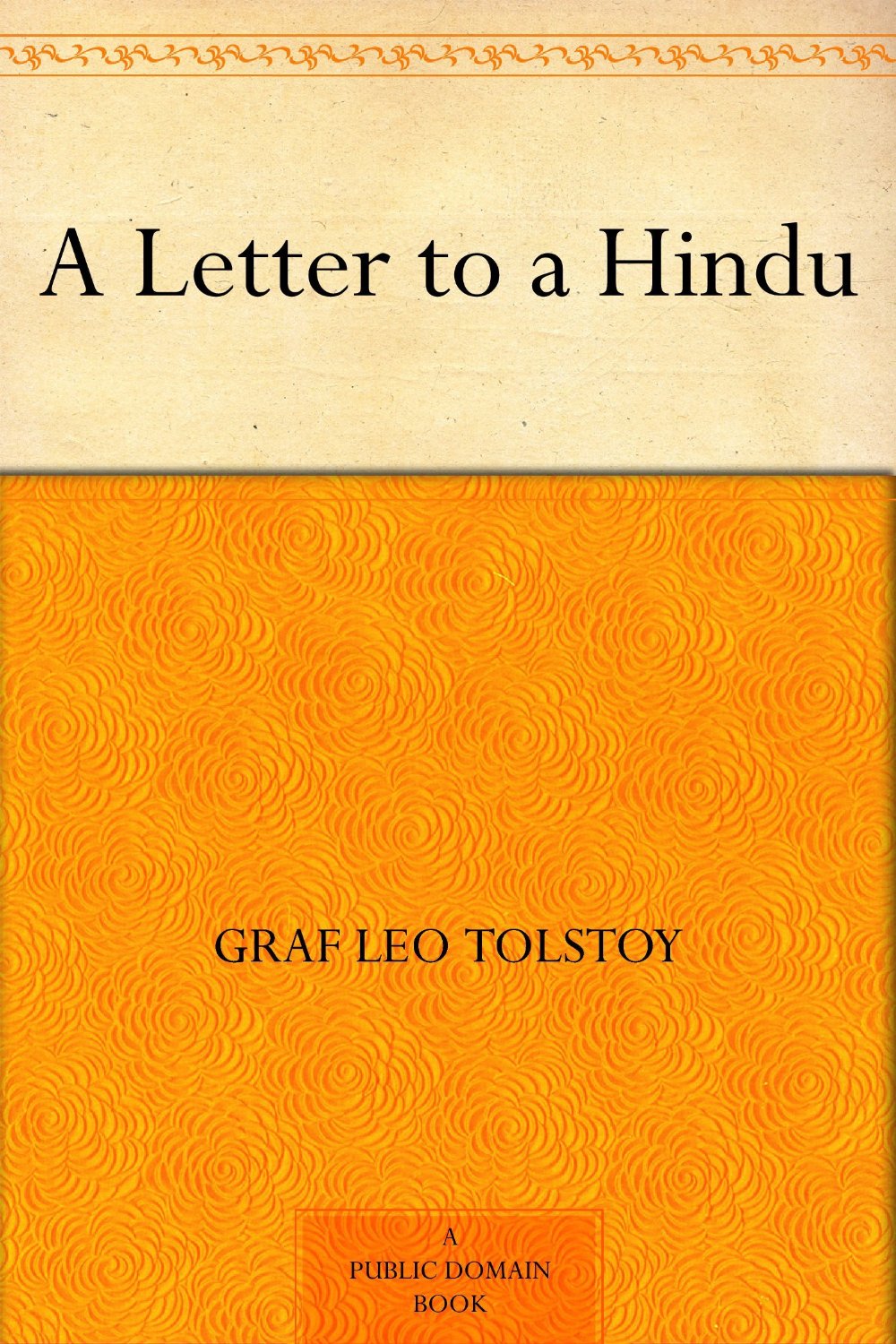 In 1908, Indian revolutionary Taraknath Das wrote to Leo Tolstoy, by then one of the most famous public figures in the world, asking for the author’s support in India’s independence from British colonial rule. On December 14, Tolstoy, who had spent the last twenty yearsseeking the answers to life’s greatest moral questions, was moved to reply in a long letter, which Das published in the Indian newspaperFree Hindustan. Passed from hand to hand, the missive finally made its way to the young Mahatma Gandhi, whose career as a peace leader was just beginning in South Africa. He wrote to Tolstoy asking for permission to republish it in his own South African newspaper, Indian Opinion. Tolstoy’s letter was later published in English under the title A Letter to a Hindu (free download; public library).
In 1908, Indian revolutionary Taraknath Das wrote to Leo Tolstoy, by then one of the most famous public figures in the world, asking for the author’s support in India’s independence from British colonial rule. On December 14, Tolstoy, who had spent the last twenty yearsseeking the answers to life’s greatest moral questions, was moved to reply in a long letter, which Das published in the Indian newspaperFree Hindustan. Passed from hand to hand, the missive finally made its way to the young Mahatma Gandhi, whose career as a peace leader was just beginning in South Africa. He wrote to Tolstoy asking for permission to republish it in his own South African newspaper, Indian Opinion. Tolstoy’s letter was later published in English under the title A Letter to a Hindu (free download; public library).
The exchange sparked an ongoing correspondence between the two that lasted until Tolstoy’s death — a meeting of two great minds and spirits, eventually collected in Letters from One: Correspondence (and more) of Leo Tolstoy and Mohandas Gandhi and rivaled only by Einstein’s correspondence with Freud on violence and human nature.
Tolstoy’s letters issue a clarion call for nonviolent resistance — he admonishes against false ideologies, both religious and pseudo-scientific, that promote violence, an act he sees as unnatural for the human spirit, and advocates for a return to our most natural, basic state, which is the law of love. Evil, Tolstoy argues with passionate conviction, is restrained not with violence but with love — something Maya Angelou would come to echo beautifully decades later.
Gandhi’s introduction to the original edition, in which he calls Tolstoy “one of the clearest thinkers in the western world, one of the greatest writers,” offers a pithy caveat to the text, as perfect today as it was a century ago:
One need not accept all that Tolstoy says … to realize the central truth of his indictment.[...]There is no doubt that there is nothing new in what Tolstoy preaches. But his presentation of the old truth is refreshingly forceful. His logic is unassailable. And above all he endeavors to practice what he preaches. He preaches to convince. He is sincere and in earnest. He commands attention.
Tolstoy opens each “chapter” of his missive — for the letter’s length, indeed, puts in glaring perspective the nuanceless and hasty op-eds of our time, contrasting the truly reflective with the merely reactive — by quoting a passage from Krishna as a backdrop for his political, moral, and humanistic arguments. His words bear extraordinary prescience today, as we face a swelling tide of political unrest, ethnic violence, and global conflict. He writes:
The reason for the astonishing fact that a majority of working people submit to a handful of idlers who control their labour and their very lives is always and everywhere the same — whether the oppressors and oppressed are of one race or whether … the oppressors are of a different nation.[...]The reason lies in the lack of a reasonable religious teaching which by explaining the meaning of life would supply a supreme law for the guidance of conduct and would replace the more than dubious precepts of pseudo-religion and pseudo-science with the immoral conclusions deduced from them and commonly called “civilization.”
It’s worth pausing here to note that Tolstoy’s notion of “religious teaching” is perhaps best regarded as “spiritual direction,” for he dedicated a great portion of his life trying to discern precisely such spiritual direction for himself by selectively culling wisdom from all the major religious and philosophical traditions. Indeed, he speaks to that aspect directly further along in the letter:
In every individual a spiritual element is manifested that gives life to all that exists, and that this spiritual element strives to unite with everything of a like nature to itself, and attains this aim through love… The mere fact that this thought has sprung up among different nations and at different times indicates that it is inherent in human nature and contains the truth. But this truth was made known to people who considered that a community could only be kept together if some of them restrained others, and so it appeared quite irreconcilable with the existing order of society.
He considers how political ideologies hijacked this basic law of love at various times in human history and tried to replace it with a law of violent submission:
This truth was made known to people who considered that a community could only be kept together if some of them restrained others, and so it appeared quite irreconcilable with the existing order of society… The dissemination of the truth in a society based on coercion was always hindered in one and the same manner, namely, those in power, feeling that the recognition of this truth would undermine their position, consciously or sometimes unconsciously perverted it by explanations and additions quite foreign to it, and also opposed it by open violence. Thus the truth — that his life should be directed by the spiritual element which is its basis, which manifests itself as love, and which is so natural to man—this truth, in order to force a way to man’s consciousness, had to struggle not merely against the obscurity with which it was expressed and the intentional and unintentional distortions surrounding it, but also against deliberate violence, which by means of persecutions and punishments sought to compel men to accept religious laws authorized by the rulers and conflicting with the truth.
[...]The recognition that love represents the highest morality was nowhere denied or contradicted, but this truth was so interwoven everywhere with all kinds of falsehoods which distorted it, that finally nothing of it remained but words. It was taught that this highest morality was only applicable to private life — for home use, as it were — but that in public life all forms of violence — such as imprisonment, executions, and wars — might be used for the protection of the majority against a minority of evildoers, though such means were diametrically opposed to any vestige of love. And though common sense indicated that if some men claim to decide who is to be subjected to violence of all kinds for the benefit of others, these men to whom violence is applied may, in turn, arrive at a similar conclusion with regard to those who have employed violence to them, and though the great religious teachers … foreseeing such a perversion of the law of love, have constantly drawn attention to the one invariable condition of love (namely, the enduring of injuries, insults, and violence of all kinds without resisting evil by evil) people continued — regardless of all that leads man forward — to try to unite the incompatibles: the virtue of love, and what is opposed to love, namely, the restraining of evil by violence. And such a teaching, despite its inner contradiction, was so firmly established that the very people who recognize love as a virtue accept as lawful at the same time an order of life based on violence and allowing men not merely to torture but even to kill one another.
He distills this idea to one “old and simple truth”:
It is natural for men to help and to love one another, but not to torture and to kill one another.
In addition to the false interpretations of religion, Tolstoy takes equal issue with scientific reductionism — something that undoubtedly felt like a great threat at the dawn of the twentieth century, when science was just beginning break to down the material universe into its basic atomic units, a discovery that many feared might be reduced to the hollowing belief that a human being is nothing more than physical “stuff.” Both science and religion, Tolstoy argues, could result in dangerous dogma that blinds us to the basic law of love, if taken at face value and stripped of nuance — the danger of, as he puts it, “scientific superstition replacing the religious one”:
But by the term “scientific” is understood just what was formerly understood by the term “religious”: just as formerly everything called “religious” was held to be unquestionable simply because it was called religious, so now all that is called “scientific” is held to be unquestionable… The unfortunate majority of men bound to toil is so dazzled by the pomp with which these “scientific truths” are presented, that under this new influence it accepts these scientific stupidities for holy truth, just as it formerly accepted the pseudo-religious justifications.
(How easy it is even today for laypeople to be “dazzled by the pomp” of questionable science journalism that prioritizes clickbait sensationalism — something else about which Tolstoy held passionate, prescient opinions — over clarity and rigor.)
He returns to the central point, affirming Gandhi’s advocacy of nonviolent resistance:
Love is the only way to rescue humanity from all ills, and in it you too have the only method of saving your people from enslavement… Love, and forcible resistance to evil-doers, involve such a mutual contradiction as to destroy utterly the whole sense and meaning of the conception of love.
Considering the British colonization of India, Tolstoy marvels at how “a commercial company enslaved a nation comprising two hundred millions” and argues that this was only made possible by people, both the oppressors and the oppressed, failing to contact “the eternal law of love inherent in humanity.” He writes:
As soon as men live entirely in accord with the law of love natural to their hearts and now revealed to them, which excludes all resistance by violence, and therefore hold aloof from all participation in violence — as soon as this happens, not only will hundreds be unable to enslave millions, but not even millions will be able to enslave a single individual.
Reflecting on the process of reawakening to that “eternal law,” Tolstoy offers a developmental metaphor:
What is now happening to the people of the East as of the West is like what happens to every individual when he passes from childhood to adolescence and from youth to manhood. He loses what had hitherto guided his life and lives without direction, not having found a new standard suitable to his age, and so he invents all sorts of occupations, cares, distractions, and stupefactions to divert his attention from the misery and senselessness of his life. Such a condition may last a long time.
When an individual passes from one period of life to another a time comes when he cannot go on in senseless activity and excitement as before, but has to understand that although he has outgrown what before used to direct him, this does not mean that he must live without any reasonable guidance, but rather that he must formulate for himself an understanding of life corresponding to his age, and having elucidated it must be guided by it. And in the same way a similar time must come in the growth and development of humanity. I believe that such a time has now arrived — not in the sense that it has come in the year 1908, but that the inherent contradiction of human life has now reached an extreme degree of tension: on the one side there is the consciousness of the beneficence of the law of love, and on the other the existing order of life which has for centuries occasioned an empty, anxious, restless, and troubled mode of life, conflicting as it does with the law of love and built on the use of violence. This contradiction must be faced, and the solution will evidently not be favorable to the outlived law of violence, but to the truth which has dwelt in the hearts of men from remote antiquity: the truth that the law of love is in accord with the nature of man.But men can only recognize this truth to its full extent when they have completely freed themselves from all religious and scientific superstitions and from all the consequent misrepresentations and sophistical distortions by which its recognition has been hindered for centuries.To save a sinking ship it is necessary to throw overboard the ballast, which though it may once have been needed would now cause the ship to sink.
Sensing that global tensions were brewing, Tolstoy added the prescient admonition that “in our time all these things must be cleared away in order that mankind may escape from self-inflicted calamities that have reached an extreme intensity.” World War I broke out less than five years later. One of humanity’s grimmest self-inflicted calamities offered evidence, as modern wars do, that we still have a long way to go before reaching that return to the basic nature of love Tolstoy envisioned — which is why Tolstoy’s closing words to Gandhi ring with amplified urgency today:
What are wanted for the Indian as for the Englishman, the Frenchman, the German, and the Russian, are not Constitutions and Revolutions, nor all sorts of Conferences and Congresses, nor the many ingenious devices for submarine navigation and aerial navigation, nor powerful explosives, nor all sorts of conveniences to add to the enjoyment of the rich, ruling classes; nor new schools and universities with innumerable faculties of science, nor an augmentation of papers and books, nor gramophones and cinematographs, nor those childish and for the most part corrupt stupidities termed art — but one thing only is needful: the knowledge of the simple and clear truth which finds place in every soul that is not stupefied by religious and scientific superstitions — the truth that for our life one law is valid — the law of love, which brings the highest happiness to every individual as well as to all mankind. Free your minds from those overgrown, mountainous imbecilities which hinder your recognition of it, and at once the truth will emerge from amid the pseudo-religious nonsense that has been smothering it: the indubitable, eternal truth inherent in man, which is one and the same in all the great religions of the world.
(Twelve years earlier, Tolstoy found far more than “childish and for the most part corrupt stupidities” in art in his sublime essay on the “emotional infectiousness” of art.)
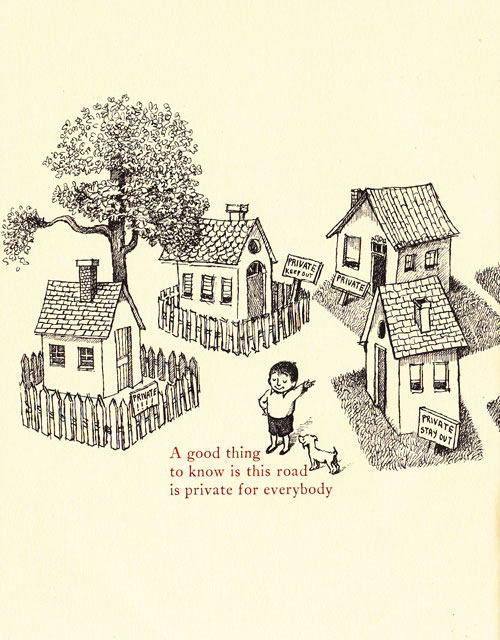
Illustration by Maurice Sendak for 'Open House for Butterflies' by Ruth Krauss. Click image for more.
Writing to Gandhi again on September 7, 1910 — eight weeks before he took his final breath — Tolstoy revisited the subject with even more heartfelt conviction:
The longer I live — especially now when I clearly feel the approach of death — the more I feel moved to express what I feel more strongly than anything else, and what in my opinion is of immense importance, namely, what we call the renunciation of all opposition by force, which really simply means the doctrine of the law of love unperverted by sophistries. Love, or in other words the striving of men’s souls towards unity and the submissive behavior to one another that results therefrom, represents the highest and indeed the only law of life, as every man knows and feels in the depths of his heart (and as we see most clearly in children), and knows until he becomes involved in the lying net of worldly thoughts… Any employment of force is incompatible with love.
A Letter to a Hindu is well worth a read in its entirety, and it’s available as a free download. Complement it with Tolstoy on finding meaning in a meaningless world, his timeless Calendar of Wisdom, and a rare recording of the authorreading from it shortly before his death, then revisit another extraordinary exchange of Eastern and Western ideas in Einstein and Tagore’s 1930 conversation about Truth and Beauty.
Charity and Sylvia: The Remarkable Story of How Two Women Married Each Other in Early America
“For 40 years… they have shared each other’s occupations and pleasures and works of charity while in health, and watched over each other tenderly in sickness.”
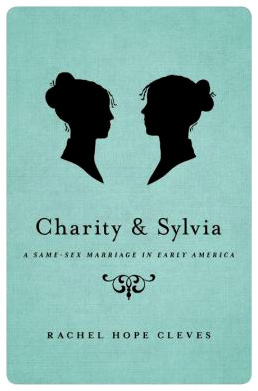 In 1897, a man by the name of Hiram Harvey Hurlburt recorded in his diary: “Miss Bryant and Miss Drake were married to each other.”Nine decades earlier in a neighboring village, more than two centuries before Edie and Theaclaimed equal dignity for all love in the eyes of the law, 30-year-old Charity Bryant and 22-year-old Sylvia Drake had entered into a lifelong union and promised eternal love to one another, immortalizing their vows in a traditional silhouette portrait. With level eyes and uplifted chins, two elegant black outlines gaze at each other across a thick cream-colored mat, framed by delicate paper with pinkened edges and encircled by a thin braid of blond hair, which forms a heart between their mirrored bosoms.
In 1897, a man by the name of Hiram Harvey Hurlburt recorded in his diary: “Miss Bryant and Miss Drake were married to each other.”Nine decades earlier in a neighboring village, more than two centuries before Edie and Theaclaimed equal dignity for all love in the eyes of the law, 30-year-old Charity Bryant and 22-year-old Sylvia Drake had entered into a lifelong union and promised eternal love to one another, immortalizing their vows in a traditional silhouette portrait. With level eyes and uplifted chins, two elegant black outlines gaze at each other across a thick cream-colored mat, framed by delicate paper with pinkened edges and encircled by a thin braid of blond hair, which forms a heart between their mirrored bosoms.
This is how historian Rachel Hope Cleves paints the backdrop of these two women’s era-defying relationship, the remarkable story of which she tells with equal parts rigor and sensitivity in Charity & Sylvia: A Same-Sex Marriage in Early America (public library).
Reflecting on the symbolism of the silhouette portrait, Cleves writes:
Their sameness is misleading, a misapprehension that obscures their differences from each other, and their difference as a pair from others at the time…Charity opened the door to a different life. She struck an astonishing contrast to the women in Sylvia’s family, who were all mothers to large and growing families. Sylvia ultimately had sixty-four nieces and nephews; one sister-in-law gave birth to eighteen children, ten by the time Sylvia and Charity met…[Charity] had pledged at age twenty-three to never get married. Instead [she] poured her creative energies into writing verses, not birthing children. Charity’s singularity and singlehood were intoxicating to Sylvia, who had very little interest in marriage herself. Sylvia dismissed the men who courted her without consideration. The Drakes could not make sense of Sylvia’s aversion. But in Charity, Sylvia finally found a kindred soul.What an irony that these two marriage-averse women ended up forming such a remarkable union… Once Sylvia and Charity found each other, they were never willing to be parted. Charity described their encounter as “providence.”
Mere months after that fateful first meeting — one imagines something akin tohow Alice B. Toklas met Gertrude Stein — Charity rented a room at Weybridge and on July 3, 1807, Sylvia moved in. Cleves writes:
For the rest of their lives, the two women would celebrate this date as the beginning of their union. Over the next forty-four years they remained mutually devoted to each other through the tribulations of ill health, overwork, and spiritual doubt.
They finally parted when Charity died in 1851. Seventeen lonely years later, Sylvia was buried next to her in the graveyard on Weybridge Hill, under a shared headstone, like any married couple.
But even though such same-sex unions were not entirely uncommon, what made that between Charity and Sylvia so singular was that it was an open secret — if there was any closet at all, it was wholly transparent, with the entire village looking in:
Although Sylvia and Charity lived a quiet life, far from the bustle and commotion of the nineteenth century’s growing cities, they did not live in secret. Everyone who knew them understood that they were a couple and viewed their relationship as a marriage or something like it… Charity’s nephew, the poet William Cullen Bryant, came close when he described the relationship as “no less sacred to them than the tie of marriage.”
And yet even boldness is beholden to the cultural context of its time — though their marriage was in many ways revolutionary, it simply reappropriateddomestic gender expectations rather than creating new ones altogether:
One reason people viewed Charity and Sylvia’s relationship as marital was that the women divided their domestic and public roles according to the familiar pattern of husband and wife. Throughout their lives together Charity always served as head of the household. Her name came first in public documents, such as tax records and census records. She handled the money and took the leading role in all of their business. Sylvia performed the wifely work of cooking and keeping house. In some ways, she did not live all that differently from her sisters after all.
Once again, this dynamic calls to mind Gertrude Stein, who famously called Alice B. Toklas her “kitten, baby, queen, cherubim, cake, lobster and wife.”Cleves writes:
Hiram Hurlburt explained in his memoir, “Miss Bryant was the man” in the marriage. And Sylvia, according to William Cullen Bryant, was a “fond wife” to her “husband.”Charity and Sylvia also seem to have viewed their relationship in these terms. Charity portrayed herself as a husband when she called Sylvia her “help-meet” — a common early American synonym for wife, adopted from the Bible, Genesis 2:18. Sylvia fantasized about taking Charity’s name for her own. On an archived scrap of paper, in Sylvia’s handwriting, there survives a list of names that looks like practice toward a signature, with big loops on the capitals and flourishes on the final letters. The list begins with the name “Bryant,” followed by “Bryant Charity,” then plunges into the sequence “Bryant Sylvia Bryant Sylvia Bryant Charity Bryant Sylvia.” Excluded from the legal form of marriage, it appears that Sylvia, in a romantic gesture, once inscribed her desire to become a wife in name as well as practice.According to English common-law tradition, wives assumed their husbands’ names because marriage transformed spouses into a single person. Genesis 2:24 states that “a man shall cleave unto his wife: and they shall be one flesh.” The idea that a husband and wife became one person, in spirit, body, and law, lay at the heart of early American ideas of marriage. The eighteenth-century English jurist William Blackstone described husbands and wives as one person in the law. Charity shared Sylvia’s evident wish for marital oneness. “May we pass our whole life,” Charity serenaded Sylvia in an 1810 poem, “and our minds be united in one.” Her language echoed an early nineteenth-century English treatise, which defined husbands and wives as “united in one body out of two by God.”
But perhaps most interesting of all is the transparency of their marriage. Indeed, that proverbial closet appears less like a closet than like a translucent Japanese parlor screen — as in their wedding portrait, one can see the women’s silhouettes, the outlines of the relationship, and interpret them with one’s chosen degree of realism, fill them in with as much social propriety as one needs to feel proper oneself.
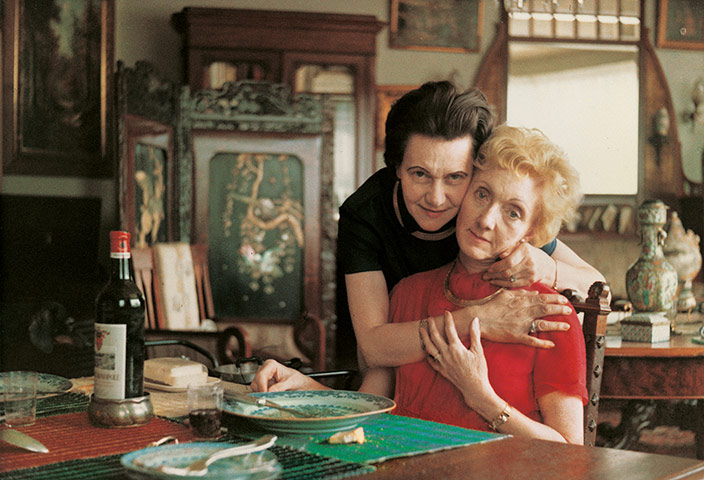
Photograph from 'The Invisibles,' a compendium of archival images of queer couples celebrating their love. Click image for more.
Cleves considers the question of freely relinquished privacy:
Like queer people in many times and places, Charity and Sylvia preserved their reputations by persuading their community to treat the matter of their sexuality as an open secret. Although it is commonly assumed that the “closet” is an opaque space, meaning that people who are in the closet keep others in total ignorance about their sexuality, often the closet is really an open secret. The ignorance that defines the closet is as likely to be a carefully constructed edifice as it is to be a total absence of knowledge. The closet depends on people strategically choosing to remain ignorant of inconvenient facts…The open closet is an especially critical strategy in small towns, where every person serves a role, and which would cease to function if all moral transgressors were ostracized. Small communities can maintain the fiction of ignorance in order to preserve social arrangements that work for the general benefit. Queer history has often focused on the modern city as the most potent site of gay liberation, since its anonymity and living arrangements for single people permitted same-sex-desiring men and women to form innovative communities. More recognition needs to be given to the distinctive opportunities that rural towns allowed for the expression of same-sex sexuality.[...]Charity and Sylvia gained the toleration of their relatives and community not by hiding away but by being public-minded… They became “Aunt Charity” and “Aunt Sylvia” to the whole community… [Their] relationship, far from hidden, was widely known and respected. In fact, the absence of a man in their household allowed the women’s marriage less privacy than traditional unions received. In a male-dominated world, two women could not claim the same freedom from public interference that a man could for his home.
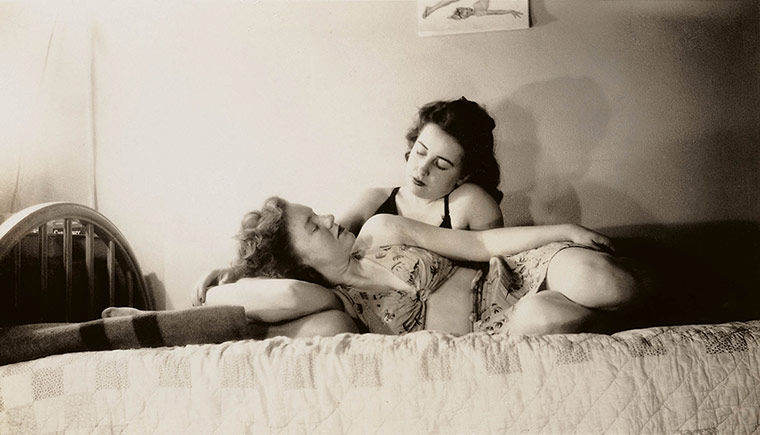
Photograph from 'The Invisibles,' a compendium of archival images of queer couples celebrating their love. Click image for more.
The first formal account of the women’s marriage came from Charity’s nephew, Cullen, who wrote about it in the New-York Evening Post in 1843, as Charity and Sylvia were celebrating their fortieth anniversary. Charity supported Cullen’s poetic aspirations from a young age and he went on to become a writer. In 1850, he published a book of letters, in which he wrote a lyrical account of Charity and Sylvia’s life together, inspired by a popular marriage passage in The Book of Common Prayer:
If I were permitted to draw aside the veil of private life, I would briefly give you the singular, and to me most interesting history of two maiden ladies who dwell in this valley. I would tell you how, in their youthful days, they took each other as companions for life, and how this union, no less sacred to them than the tie of marriage, has subsisted, in uninterrupted harmony, for forty years, during which they have shared each other’s occupations and pleasures and works of charity while in health, and watched over each other tenderly in sickness; for sickness has made long and frequent visits to their dwelling. I could tell you how they slept on the same pillow and had a common purse, and adopted each other’s relations, and how one of them, more enterprising and spirited in her temper than the other, might be said to represent the male head of the family, and took upon herself their transactions with the world without, until at length her health failed, and she was tended by her gentle companion, as a fond wife attends her invalid husband. I would tell you of their dwelling, encircled with roses, which now in the days of their broken health, bloom wild without their tendance, and I would speak of the friendly attentions which their neighbors, people of kind hearts and simple manners, seem to take pleasure in bestowing upon them, but I have already said more than I fear they will forgive me for, if this should ever meet their eyes, and I must leave the subject.
But the story, Cleves notes with a charming wink at her profession (“Historians, unlike poets, are not content with evocative imagery. We have a ravenous appetite for the factual.”), so woven as much of such second-hand accounts as it is of first-hand silences — once again, the negative space shapes the silhouette, adding by leaving out:
Not only have few of the women’s letters survived, the documents that do remain are mostly silent on the subject that first sparked my interest and probably the interest of most readers: the women’s sexuality. Some of the strongest evidence for the women’s sexual relationships appears in their religious writings, where they struggled with the burden of secret sins that left both women feeling uncertain about their redemption. Romantic letters and poems hint at more positive aspects of the women’s physical relationship. In both these sources, references to sexuality take the form of allusions, not direct statements. Respectable nineteenth-century women rarely wrote directly about sex of any sort, but this silence is especially characteristic of the history of same-sex intimacy. For many centuries, sex between women or between men was referred to as “the mute sin” or the “crime not fit to be named.”
Even famous lovers like Oscar Wilde and Alfred “Bosie” Douglas, Cleves points out, called their longtime relationship “the love that dare not speak its name.” What’s singular about the women’s story is that they did speak, if sidewise, to the true nature of their relationship. As such, it reveals just how much more tolerant early America was of same-sex marriage than most people realize. Cleves writes:
Charity’s and Sylvia’s lives tell a more complicated story, revealing the gap that existed between prescription and practice, the rules that govern society and how societies actually operate… More astonishing still, society could also tolerate such sexual possibilities through manufactured ignorance, creating opportunities for same-sex sexuality that should ostensibly have been impossible.[...]Same-sex marriage is not as new as Americans on both sides of today’s debate tend to assume; it is neither the radical break with timeless tradition that conservatives fear nor the unprecedented innovation of a singularly tolerant age that liberals praise. It fits within a long history of marriage diversity in North America that included practices such as polygamy, self-divorce, free love, and interracial unions… Through their union, Charity and Sylvia undermined the conventional definitions of womanhood and manhood that ordinary marriages reinforced. They staked out new claims to familial, economic, and spiritual authority that were denied to their conventionally married sisters. It seems reasonable to hope that same-sex marriage has the same potential to reshape acceptable sex roles today.
In that regard, Cleves — who chanced upon Charity and Sylvia’s story by complete accident while browsing a local history museum — reflects on the broader importance of mining history for evidence of social phenomena we mistakenly believe to be unique to our age:
The research process has left me more sure than ever that there are countless pieces remaining to be found, if not from Charity’s and Sylvia’s lives then from the lives of other lovers who lived outside the norms. Their stories have been hard to see because they confound our expectations. We see each story as one of a kind, defying categorization. Taken together they tell a history we are only beginning to know. The most remarkable element of Charity and Sylvia’s life together, in the final assessment, may be how unremarkable it was.
Charity & Sylvia is an absorbing and perspective-shifting read in its entirety, chronicling the lives of these two pioneering women, the multitude of challenges, personal and social, they overcame to be together, and the depth and richness of their lifelong love. Complement it with the greatest queer love letters of all time, including Virginia Woolf, Oscar Wilde, Margaret Mead, and Edna St. Vincent Millay, then revisit the passionate correspondence of Vita Sackville-West and Violet Trefusis and these moving vintage photographs of queer couples celebrating their love in the early twentieth century.
This Land Is Mine: Nina Paley’s Animated History of the Israel-Palestine Conflict
“A brief history of the land called Israel / Palestine / Canaan / the Levant.”
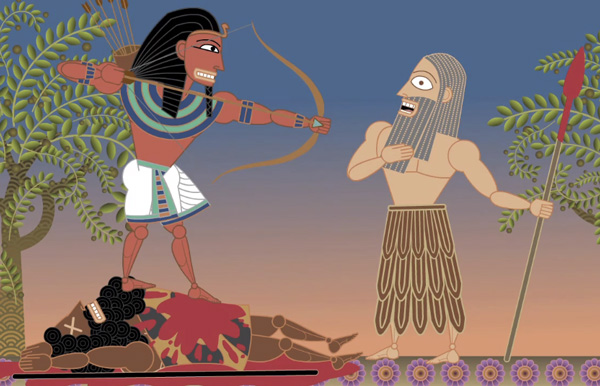 Ever since her remarkable 2008 animated feature film Sita Sings The Blues, I’ve been a great admirer of animator, cartoonist, and free-culture activist Nina Paley’s creative and meta-creative work. The recent situation in Gaza makes Paley’s 2012 animated short film This Land Is Mine — “a brief history of the land called Israel / Palestine / Canaan / the Levant” — particularly timely.
Ever since her remarkable 2008 animated feature film Sita Sings The Blues, I’ve been a great admirer of animator, cartoonist, and free-culture activist Nina Paley’s creative and meta-creative work. The recent situation in Gaza makes Paley’s 2012 animated short film This Land Is Mine — “a brief history of the land called Israel / Palestine / Canaan / the Levant” — particularly timely.
Using the visual storytelling tropes of comics and videogames, genres characterized by expressive over-the-topness, Paley captures the subtleties and complexities of the interplay of religion, geopolitics, and the fatal human hunger for power underpinning the region’s long history of conflict.
On her blog, Paley offers a viewer’s guide to who’s killing whom, “because you can’t tell the players without a pogrom.” Her work, like Brain Pickings, is supported through donations, so consider making one on her site.
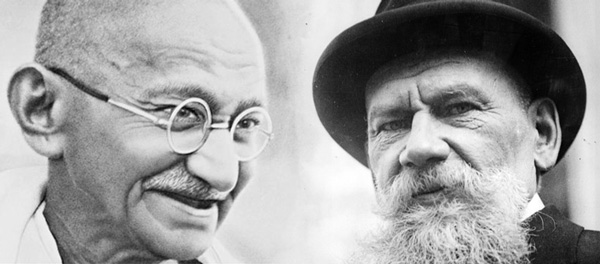
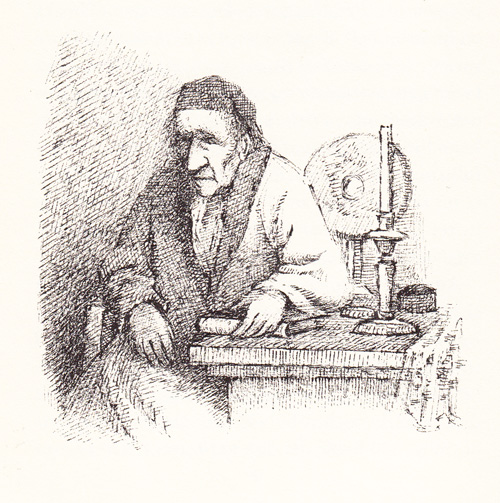
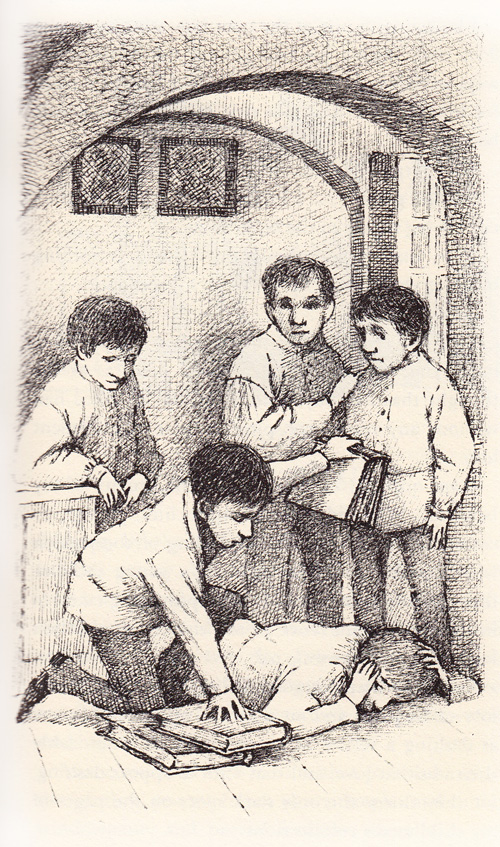
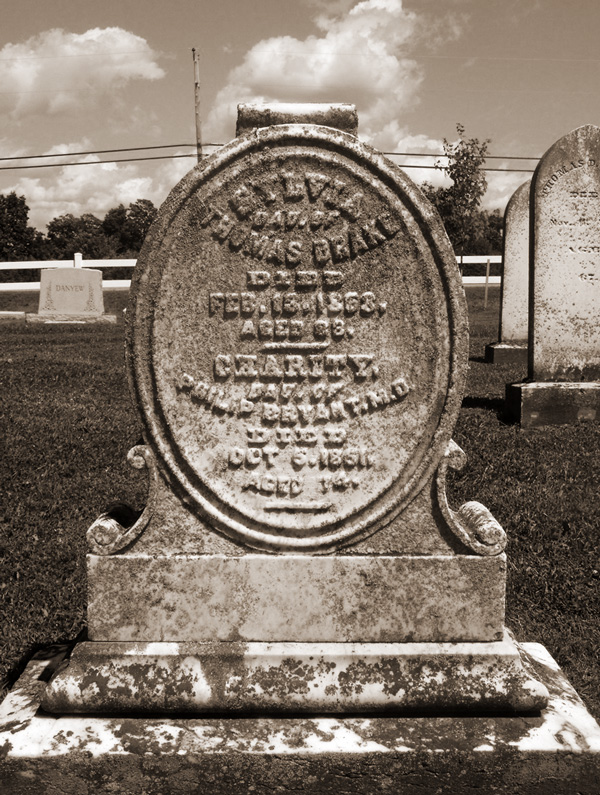
Aucun commentaire:
Enregistrer un commentaire